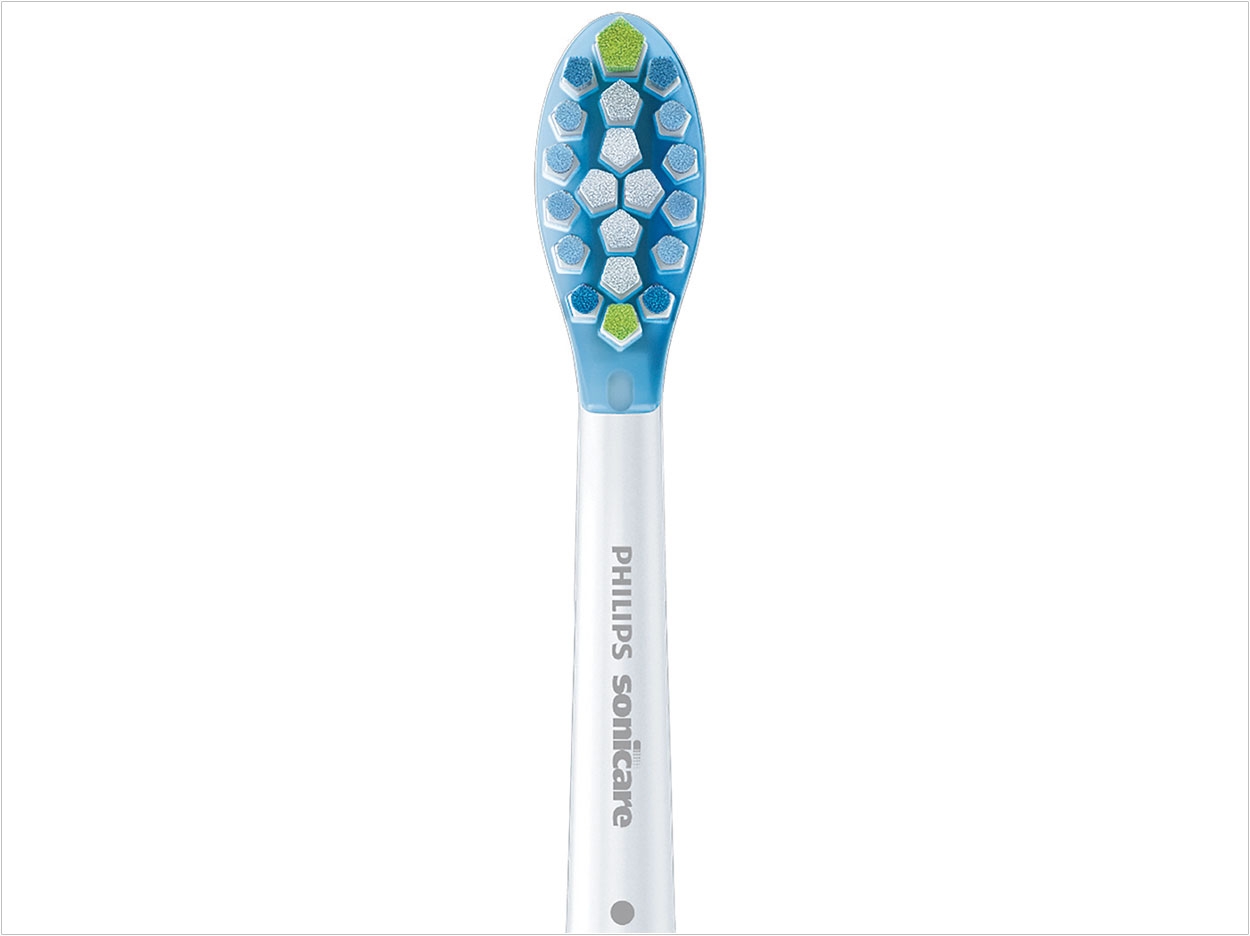
.png) |
| Figure 1. The Philips Sonicare FlexCare Platinum with Adaptive Cleaning Technology. |
 |
| Figure 2. Floss is ineffective in interproximal spaces with concave tooth surfaces. Even with regular flossing, any biofilm coating this interproximal surface would remain undisturbed. |
Despite the fact that few patients actually do it, flossing remains the most commonly recommended method for interproximal daily hygiene in North America. Even more disconcerting is the lack of evidence supporting the use of dental floss.
Interproximal areas have long been regarded as being the most difficult to adequately debride. For years, dental professionals have pushed their beloved “brush and floss” mantra on anyone who would listen, and the recommendations were frequently ignored. Flossing became the unofficial benchmark of one’s dedication to his or her oral health. Dental professionals often begin their assessment of patients’ ability to maintain their oral health by questioning whether they floss regularly. In this age of evidence-based dentistry (EBD), perhaps it is time for dental professionals to rethink their allegiance to flossing and brushing regimens that lack evidence and compliance success.
As we all know, available research tells only part of the story. EBD has 3 important components: the best available scientific evidence, a dental professional’s clinical skill and judgment, and each individual patient’s needs and preferences. Only when all 3 are given due consideration in individual patient care is EBD actually being practiced.
Systematic reviews are designed not only to identify all relevant information contained in the literature but also to evaluate the quality of the information. The conclusion from a recent systematic review suggested this: “…the dental professional should determine, on an individual patient basis, whether high-quality flossing is an achievable goal. In light of the results of this comprehensive literature search and critical analysis, it is concluded that routine instruction to use floss is not supported by scientific evidence.”
Similarly, manual toothbrushes have existed since the times of the Egyptian pharaohs with little change—they remain a stick with bristles! Power toothbrushes have been scientifically proven to be more effective than manual brushes, and still some dental professionals provide a manual toothbrush to every patient following a prophylaxis! A brush like the new Philips Sonicare FlexCare Platinum with Adaptive Clean Technology (Figure 1) is designed to help patients brush smarter, not harder! This brush is 10 times more effective than a manual toothbrush in plaque removal, and the intuitive pressure sensor gently pulsates to tell patients they are brushing too hard. It would be an advantage to patients if dental professionals would stick (instead) with technology.
Floss interrupts periodontal and caries pathogens via mechanical dislodgement but does so only when the floss threads contact the tooth surface. Against flat or convex interproximal surfaces, floss used properly may be able to effectively interrupt the pathogenic bacterial biofilm. However, recession of the gingival margin, especially posteriorly, can expose root surfaces with concave morphology that do not lend themselves to contact with floss (Figure 2). Patients who are faithful with routine flossing and even use an ideal technique will have no positive effect on the potential biofilm on the concave portions that comprise most interproximal tooth surfaces.
The bacterial initiation of the host inflammatory process that leads to periodontal pocket formation is well understood. The overwhelming evidence confirming the adverse relationship between oral inflammation and systemic disease suggests that consistently adequate daily biofilm removal can pay dividends to oral and systemic health. In this age of EBD, simply telling every patient to floss and brush can no longer be justified. Despite the deeply entrenched loyalty to floss as the interproximal “gold standard” and the recommendation or dispensing of manual toothbrushes out of habit, it is time to take a different, more proactive and updated approach to oral hygiene instructions to improve the oral and overall health of our patients.
Dr. Donley is currently in the private practice of periodontics and implantology in Bowling Green, Ky. After graduating from the University of Notre Dame, Georgetown University School of Dentistry, and completing a general practice residency, he practiced general dentistry. He then returned to Indiana University, where he received his master’s degree in periodontics. He currently serves as editor of the Journal of the Kentucky Dental Association and is an adjunct professor of periodontics at Western Kentucky University. His course is part of the ADA Seminar Series. Dentistry Today has listed him among its Leaders in Continuing Education. He lectures and publishes frequently on topics of interest to clinical dentists and hygienists. He can be reached at (270) 842-2341 or via email at rootplane@msn.com.












